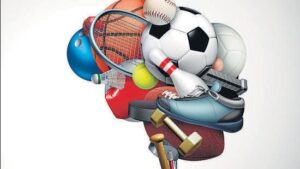
Last couple of weeks I was watching the Commonwealth Games (CWG) every evening and the good news is that a lot has changed for the better in the attitude and manner in which Indian sportspersons compete on the world stage. As a spectator and ardent supporter of Indian sports, I can honestly say that our sportspersons are now confident and seem to have decided that they belong on the world stage. This is evident from the manner in which they were competing. Most of them are at events to give their best, many of them are going for gold, and a majority of them seem to understand that even if they don’t win a medal what is important is that they give their best, focus on training and the next event.
There is a lot of behind-the-scenes enablement by the government and private organisations that has led to this change. One of the most (now) obvious changes is in policy making and governance which in turn has led to a change in attitude among many officials and coaches at the ground level. This was clearly evident in the weightlifting, boxing, and badminton events where the coaching staff were calm, clear and did their procedural job efficiently, unobtrusively while also giving precise instructions and confidence to the athletes. In weightlifting the Indian support staff particularly stood out because one could contrast it with the disconnect and uncertainty in the approach of coaching staff of many other countries, including developed nations.
There’s a tremendous amount of work still to be done in selection, training and improving the general attitude of sports federations and rank file officialdom in many sports like table tennis, athletics and swimming, but the central and state governments like Odisha are leading the way by making a concerted effort in policy making, facilitation and governance, while the armed forces, services and several private institutions and erstwhile sportspersons are playing a stellar role in strengthening and nurturing sports ecosystems.
There are two aspects of the sports ecosystem which I believe require our (common citizens) attention. The first is the media. Television broadcasters across the board have really pulled up their socks and are now in the habit of having a splendid combination of sportspersons (young and experienced) leading if not anchoring the reporting, analysis and commentary – the result is gripping television. Sections of the print media and the general multitude of independent news portals leave a lot to be desired though. Journalists have a responsibility and accountability to put things into a developmental perspective rather than resorting to reactive journalism with sensational headlines. It is essential for print and digital media to be aware and understand that this is the age of nano-specialisation and having generalists write on specific sports on the basis of tertiary research is akin to underestimating your readership – citizens today have access to the best of sports journalism online and have choice to ignore any media that does not deliver quality in a holistic viewpoint.
But today’s column is about sports culture at the grassroots, and especially in Pune. Over the past decade, as a father of young children who swim, I have been attending school, inter-school and district level events across the city. What I have learned is that Pune just does not have sports infrastructure. What I have also learned is that schools are providing only lip service to sports in their marketing literature. And finally, as a parent, I am as guilty as other parents of not helping the building of a sports culture. Facilitating and supporting my children in their endeavours is important but does not contribute to a broader sports culture.
Till a couple of years ago, I was spending full days at events such as the Pune district level swimming competitions, inter-school events at Dhruv International School, Vibgyor, and the International Boards Sports Organisation’s swimming competition at MIT Gurukul campus. What I realised is that each part of the Pune swimming ecosystem works in isolation. That may explain why in spite of having a sizeable tribe of talented swimmers at various age groups, the city does not produce a slew of national records in the pool, let alone international standard swimmers. The children really deserve credit for giving it their all, but where’s the support system?
Last week we were watching the various swimming events at CWG 2022 and by the time we came to the third recording, everyone in the family went: “The Australians will win it, there are so many of them in the final!” At the Olympics, we had all said: “The Americans or the Australians will win it.”
And therein lies the visible reason. These two nations have a swimming culture, a well-established system of talent development right at the school level, with great pools, coaches but above all else, a sense of contributing to the nation and to grow together. In each global tournament, you will see multiple entries for each event from successful sporting nations. Sports in India has to evolve from a government sponsored or individual parents-driven isolated phenomenon to a community, city sensibility. At the moment, Pune schools are all having their own sports days. Where are the inter-school competitions? Where is the commitment to get selected for the state team? The national team?
And this is where sports journalists can really help: by shifting some bandwidth from mundane reporting to developmental journalism. This is where parents can help by leading movements to ask schools for proper commitment to sports. This is where schools can help by coming together every quarter to create a calendar of events.

